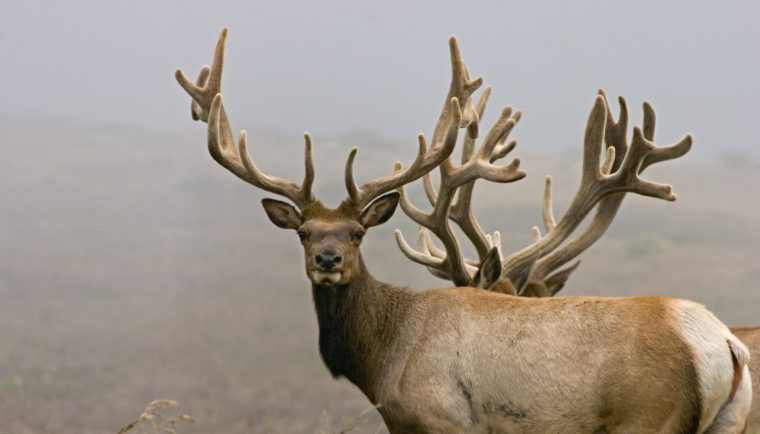
Urging NPS to Implement Plan to Conserve Native Tule Elk Population
Submitted comments in response to NPS request on Aug. 25, 2023
Status
Next Step
NPS to release final Tomales Point Area Plan
On Sept. 25, 2023, the Animal Legal Defense Fund, with several individual animal advocates and represented by the Harvard Law School Animal Law and Policy Clinic, submitted comments to the National Park Service (NPS) involving a population of Tule elk living at Tomales Point in the Point Reyes National Seashore in Marin County, California. In the comments, submitted in response to a request from the agency, we urge the NPS to implement its proposed action plan, the Tomales Point Area Plan (TPAP) public scoping newsletter “Alternative B,” with certain modifications, to help conserve the native Tule elk population in the region. The NPS must remove the Tomales Point elk fence, which currently prevents the Tule elk from gaining access to water and forage south of Tomales Point and has led to the suffering and death of hundreds of elk in recent years.

Tule elk are a native California subspecies, but their population plummeted to near-zero during the 1800s; they were reintroduced in the 1970s. In 1978, the NPS erected an eight-foot-tall fence around the Tomales Point peninsula to isolate the reintroduced elk from nearby dairy ranches. The fence traverses the entire width of Tomales Point, preventing the elk from gaining access to any food or water that is south of the fence. In 1998, NPS issued its Tule Elk Management Plan, which was intended to govern the management of the elk for no more than 10 years — until 2008. This plan remains in place today, 23 years later. The inability of the elk to access food or water outside of the fenced area has led to deaths from starvation and dehydration of Tomales Point Tule elk in large numbers. Between 2012 and 2015, the Tule elk population crashed from 540 elk to 283, a loss of 257 elk.
By 2019, the herd’s population had grown to 445, but in 2020, 152 elk died, and the population crashed to 293 elk. During the summer of 2020, visitors to the seashore witnessed emaciated, dying, and dead elk who lacked access to water. Subsequent necropsies (animal autopsies) confirmed that these elk had died of starvation or dehydration. In contrast, another population of Tule elk who are not confined by the elk fence remained relatively stable during 2020, showing that these declines were avoidable consequences of unnatural confinement. Once again, in 2021, it is believed that 25% of the remaining elk (72 elk) died due to a lack of food and water. Removing the fence will allow the herd to stabilize and reduce unnecessary elk suffering.
The “Alternative B” plan is the most appropriate, with further modifications indicated in the comments. Confining the Tomales Point Tule elk inside the fence has resulted in numerous problems for the elk, and ultimately resulted in the inhumane suffering and death of vulnerable wild animals. Removing the fence would address wild population decreases, starvation, genetic isolation, and unnecessary suffering. While the NPS has attempted to manage potential conflicts between elk and ranches, the ultimate solution is to remove the ranches and remove cows from Point Reyes National Seashore. Commercial industry that harms wildlife and the environment, damages historical and cultural sites, and promotes disease has no place in a national park. Finally, the NPS must avoid using lethal measures to manage the elk once the fence is removed and take affirmative measures to provide supplemental water to protect the elk from dehydration at least through August 2024.

What action has been taken? The comments were submitted urging the National Park Service (NPS) to implement its proposed action plan, the Tomales Point Area Plan (TPAP) public scoping newsletter “Alternative B,” with certain modifications, to help conserve the native Tule elk population in the region.
Why this proposed plan is important: The government has a responsibility to conserve and care for protected wild species such as Tule elk — but far too often, commercial animal agriculture interests are prioritized over the needs of wildlife and public lands. The Animal Legal Defense Fund uses legal action and legislative advocacy to protect wild animals and their habitats from harm and exploitation — while also working to combat the animal agriculture industry’s detrimental effects on animals and the environment.
Sign Up!
Join the Animal Legal Defense Fund's email list to stay up to date on lawsuits, legislation, and regulations affecting animals.

